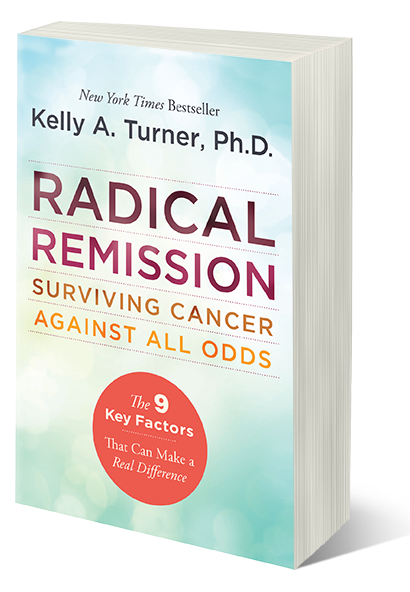Searching for the cure
My name is Debbie Reed. I’m a 59-year-old mother to 4 grown-up children and happily married to hubby Chris for 31 years. In July 2019, I was diagnosed with stage lV triple-negative breast cancer (TNBC) that had spread to the sternum and Ribs. My breast surgeon, Doctor Purser, said there was nothing further he could do and that it was time for me to go home, sort out my affairs and make some new happy memories. I pressed him for a timeline; how much time did I have? He said it was difficult to say without knowing if it had spread further around the body and there would be more tests needed. He estimated approximately 12 months to live without treatment – that’s assuming it hadn’t spread further.
The doctors said that now the cancer had advanced to the bone, my options for conventional treatments were limited to chemotherapy. If I chose this option, this would allow me to extend my stay on this earth by possibly another 12-18 months. In 2015 I was diagnosed with stage 2 TNBC and at that time I agreed to and received the standard NHS cancer treatment bundkle of poison, cut and burn. This is more widely known as, chemotherapy, followed by surgery followed by radiotherapy. To say I was very very poorly was an understatement; I was so so sick, I lost my hair, I lost lots of weight. It was a very dark time for us as a family and I pushed through it believing it was the cure.
So as I sat listening to the prognosis and my limited NHS options; a voice was screaming in my head saying “No more chemo”. I thought it will kill me before the cancer does. I felt relatively healthy at this point, so I explained to my doctor that I had made a decision not to put my body through this ordeal again and I would follow a more alternative route.
Chris and I were due to go to Hungary in the first week of August, his birthday present from wifey was tickets to see the Formula 1 and I had no intention of cancelling; we had new memories to make. We needed this time together before we had to face what was coming; it was our calm before the storm.
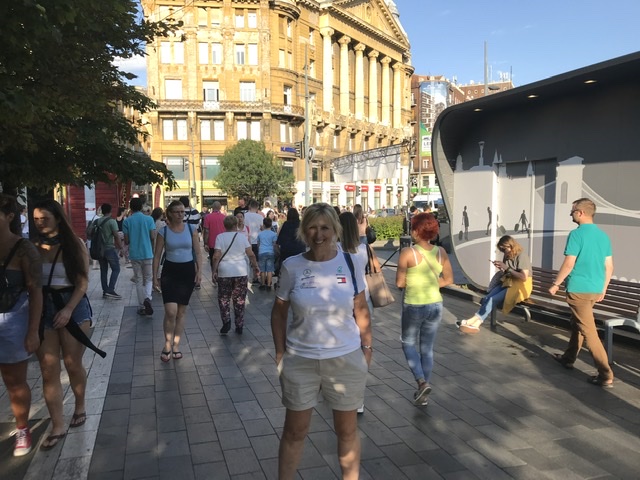
This is me in on the streets of Budapest in Hungary after returning from a day at the Hungaroring Race track. I really love this picture; it captures me looking a picture of health even though I was stage IV breast cancer. I felt full of energy and we just had the best experience together making new happy memories.
Over the weeks there has been so much time for reflection and it is in that space that I decided to use my findings to inform. I want others to have information that I didn’t have so they can make better choices. This blog is a record of my healing journey while exploring conventional and alternative cancer treatments. I intend to report and share my findings on treatments and research so others are aware of options and are not rushed into making the wrong choices.
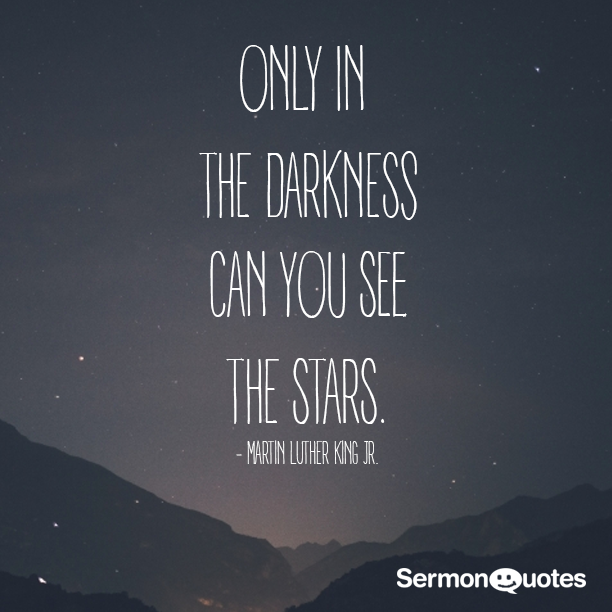
Research, Research, Research
From the moment I received the latest diagnosis, I was certain in my mind that I would need to step back from working with my clients; I had to focus my mind and time and make a healing plan.
The first time I was diagnosed with cancer in 2015, I opted for conventional treatments and so every 2nd week in between recovering from chemotherapy, although exhausted, I continued to work. Fast forward to 2019 and my thinking was this; in order for me to get a good outcome, I couldn’t be distracted. If I was going to rise to this latest challenge, I will need to clear the decks and focus on healing. I would need research and all my spare time would need to be focused on researching treatments, trials, medicines and anything that would give me a healthier and improved life compared to the current NHS offering.
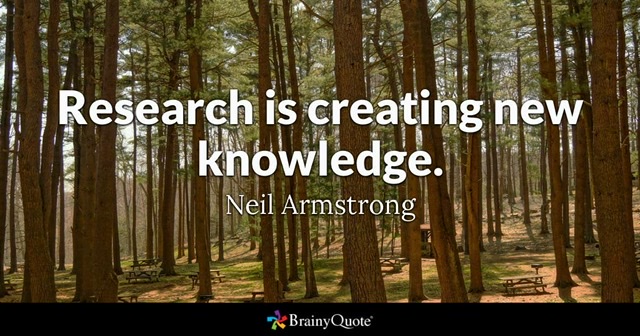
Questions, Questions, Questions
So with that, I began my research and I discovered very quickly that my new task was primarily about asking questions; it’s made easier when you know what questions to ask. My starting point was to ask the right questions, I had to become my own ‘Sherlock Holmes‘; I needed clues and evidence. This was a fact-finding exercise, I would soon find out, of mammoth proportions.
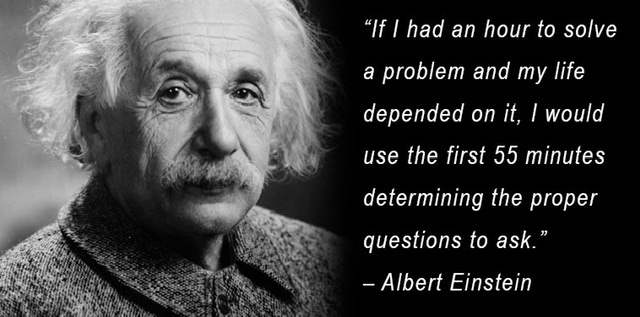
- What alternative treatments are there for cancer?
- What chemicals cause cancer to grow?
- What foods am I eating that will feed cancer?
- Does changing my diet stop the progression?
- What are the ways to treat my type and stage of cancer?
- What are the benefits and risks of each of these treatments?
- What treatment do others recommend?
- When will I need to start treatment?
- Will I need to be in the hospital for treatment?
- What treatments are available outside of the UK?
- What new NHS treatments are being trialled?
- Are there any conventional treatments that work in synergy with complementary treatments?
How to Starve Cancer
Older readers may remember TINA: There Is No Alternative. It was the catchphrase Margaret Thatcher relied on when anyone queried the wisdom of her enthusiasm for the neo-liberal global market economy.

TINA also serves as a description of the cancer establishment’s unyielding defence of their trio of treatments – surgery, chemotherapy and radiotherapy – used for decades and still all that is on offer. The idea that anything else might improve the effectiveness of the treatment or reduce the still dreadful side-effects is invariably dismissed as evidence-free quackery.
In my early research days, I discovered a remarkable riposte to cancer-TINA by someone who has near-zero qualifications for taking on the powerful oncology establishment. A former physiotherapist, and the author of a recently published book called “How to Starve Cancer“. It’s a passionate, brave and gripping medical detective story. Jane’s most obvious achievement is that she’s still alive. Twenty years ago, she was diagnosed with stage IV cervical Cancer– life expectancy measured in months – but here she still is, promoting her book and sharing her discoveries about the biochemistry of cancer and how they can be used to destroy it.
Cheap Drugs with Anti-Cancer Effects
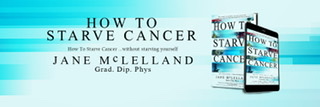
What was really exciting about Jane’s healing journey was that more than identifying cancer’s ignored vulnerabilities, she has mapped the terrain of cancer in a new way that makes clear why various complementary and alternative cancer treatments can work – diets, supplements, hyperbaric oxygen, intravenous vitamin C – and how they might be combined more effectively.
What she has added to this mix is the discovery of research on a variety of old drugs with anti-cancer properties that had never been used clinically for that purpose. She found out all about them and how they might benefit her and then made a case for why her doctors should allow her to take them experimentally. More than a decade later, the use of both cheap and promising drugs is just beginning to be explored by radical oncologists.
Jane discovered that conventional treatments currently concentrate on genes and eradicating the tumour at all costs – especially to the patients – meant that many other possibilities were being ignored. She discovered that cancer has different feeding pathways and she created a map from her research that identified the various natural growth factors which had been co-opted by cancer? Cancer is linked to inflammation in the body and to the metabolic changes which involved the way the body used fuel.
Cancer’s feeding pathways
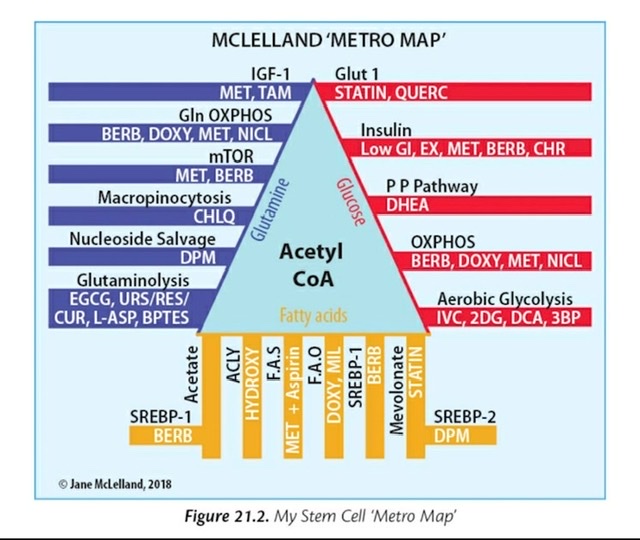
So why not try to reduce inflammation and make fuel from food harder to obtain? What about starving cancer? Jane documents her findings in her book; ‘How to Starve Cancer’
Looking for the Common Denominator
Reading Jane’s book filled me with hope and determination; if Jane had done this, I could too and also there had to be other cases. I decided I just needed to find as many survivors as I could, who had used an alternative approach and see what the common denominator was to the healing.
I was convinced that Jane could not be the only person to have found an alternative healing plan and this belief kept me focused. My friend, Google, took me all around the world; I found hundreds of articles and testimonials on alternative methods from repurposed to illegal drugs, to prayer and faith healing. My job was to sort through them and get an understanding from each case, what they were all doing that had a common theme.
Surviving Terminal Cancer
I found the story about Professor Ben Williams who had an aggressive brain tumour. He was treated with conventional therapies and with a mix of common drugs; including those for acne, insomnia and high blood pressure.
His doctor wanted him to stick to the standard regimen of chemotherapy, surgery and radiotherapy. However, he rebelliously insisted on adding to this, a cocktail of drugs. In addition to acne pills, there were blood pressure and insomnia tablets. All were cheap and had little or no toxicity, and for all of them, Ben had gathered some credible evidence from scientific trials that they might shrink his tumour, boost his immune system and make chemotherapy more effective. However, none had been approved in the United States for use in the management of brain tumours, so his specialist had dismissed them. Ben said he would drive himself crazy researching and at times he laughed at the doctor’s suggestions that he might hurt himself. He had the most aggressive kind of brain tumour and was expected to die in a matter of months so what did he have to lose.
To follow Ben’s story follow the link; https://virtualtrials.com/surviveben.cfm
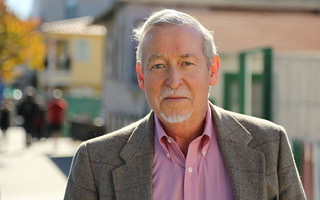
Radical Remission
While I was researching, I stumbled across the Spontaneous Remission Project, put together by the Institute of Noetic Sciences, which collected over 3,500 case studies published in medical literature about people who experienced spontaneous remissions from seemingly ‘incurable diseases’.
Most of the case studies revolved around people with Stage IV cancers who either declined conventional treatment or were given treatment deemed by doctors to be inadequate for a cure. But the Spontaneous Remission Project also includes case studies of people who had remissions from heart failure, autoimmune diseases, a gunshot wound to the head, and HIV.
It turns out that I’ m not the only one who was curious about whether people experiencing cures from “incurable” illnesses were doing something to improve their chances of a cure. Kelly A. Turner, PhD, studies people who have experienced what she calls “radical remissions.” What Kelly discovered is that the people who experienced radical remissions were not passively sitting by waiting for a miracle. They were making nine significant changes in their lives, only two of which might be recommended by a forward-thinking physician.
There is much to appreciate and admire about Radical Remission, but some of its most remarkable elements are the stories of people who have been cured of Stage IV cancers.
Take the case about Matthew, for example, who was diagnosed with terminal brain cancer at age 27. He had tried everything Western medicine had to offer and his doctors had given up and turned him over to Hospice care. With nothing left to lose, Matthew decided to embark upon a spiritual adventure, so his friends and family all donated money to send him to see the healer John of God in Brazil. Once he was in Brazil, after waiting in line to see the healer, Matthew shared his desire with John of God: to be healed of his brain cancer. After having his energy field read and being given a burst of healing energy, Matthew was instructed to start taking energetically infused passionflower herbs every day and to meditate daily in the main meditation room with John of God. Only about a hundred people are invited at a time to meditate in the main room, where a strong current of energy is believed to course through the room.
After two years of spiritual practice with John of God, he was told to go to a hospital and get an MRI. Before the results came in, Matthew knew his tumour was gone. The MRI confirmed that he had been cured. Matthew spent the next two years volunteering in Brazil to help others going through their own healing process.
Radical Remission doesn’t make any unrealistic claims, suggesting that if people follow the 9 tips shared in this book, their cancers will go away. But it does make a case for ensuring that any cancer treatment includes not just surgery, chemotherapy, and radiation, but also the essential “treatments”
9 Key Factors – present in people who are healing.
The 9 key factors that she identified for these patients
- Radically changing your diet.
- Taking control of your health.
- Following your intuition.
- Using herbs and supplements.
- Releasing suppressed emotions.
- Increasing positive emotions.
- Embracing social support.
- Deepening your spiritual connection.
- Having strong reasons for living.
Reading the testimonials and case studies, once more filled me with hope, I knew I had got this now, I can do it. Dr Turner goes into much more detail about these Principles in the book. In fact, each factor has its own chapter, as well as stories of how patients used these factors to participate in their healing journey.
Using Cannabis Oil To Heal
As I continued in my research I found case studies showing people who claimed that they were either stabilising their illness or actually healing the cancer using CBD oil. Naturally, I was curious to know more about this oil, how it worked in the body and was this a possible treatment for me?
For many years, studies have suggested cannabinoids fight different forms of breast cancer. THC has been shown to induce apoptosis in ErbB2–positive breast cancer cells and inhibit tumour growth in animals. CBD is known to work at the genetic level, blocking expression of the ID-1 gene to inhibit breast cancer metastasis.
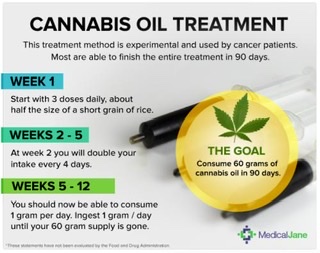
How CBD Oil Helps in Apoptosis
Apoptosis is a natural process in the body where the cells are destroyed as part of a particular organism’s growth. Cancer cells grow as an abnormal process in the body because they no longer acknowledge the body’s signals that encourage or destroy cell growth.
As these cells grow and divide, they become more uncontrollable and since they no longer respond to apoptosis, they tend to expedite cell proliferation and ignore the other signals from normal cells. That is why the endocannabinoid system is an extremely important system in the body because it also helps in modulating cell growth and death.
As cancer cells reproduce faster than the endocannabinoid system can handle, the cancer cells invade through the normal tissues and spread throughout the body. This process is called metastasis.
The endocannabinoid system has two primary receptors. One is the CB1 receptors which are mostly found in the brain, and the other one is the CB2 receptors which are primarily found in the immune system.
THC is the active compound in cannabis that binds to the CB1 receptors and is responsible for mood, behaviour, and other cerebral functions. On the other hand, CBD latches onto the CB2 receptors and tells these receptors if there are invaders that are detrimental to the body.
The apoptotic process by these receptors is achieved through the de novo synthesis of ceramide and sphingolipid that promote cell destruction.
Once they bind together, the receptor activation can then help the endocannabinoid system in signalling an antitumorigenic warning. Which means, it impairs cancer development through inhibiting reproduction, metastasis, and tumour angiogenesis.
In just the last week, results from a study launched in Israel using human trials, show that the cannabinoids in cannabis oil are undeniably helping cancer patients. Chemotherapy patients have also turned to cannabis oil for alleviating their post-chemo side effects such as nausea, vomiting, fatigue, inflammation, neuropathic pain, immune suppression, and loss of appetite.
HOW CANNABIS OIL FIGHTS CANCER
Now that I understand how cannabis oil works in general as a medicine, I had a look at the specific reasons why cannabis oil helps the body fight cancer. The two primary cannabinoids that fight cancer are THC and CBD. At this point, thousands of studies have been conducted in vitro and in vivo which show that these two cannabinoids possess the following cancer-fighting properties:
1) Antiproliferative — It prevents cancer cells from reproducing.
2) Antiangiogenic — It prevents the formation of new blood vessels needed by the tumour to grow.
3) Antimetastatic — It prevents cancer from spreading to other organs.
4) Apoptotic — It induces the cancerous cell to commit suicide.
Drug Dealers & Drug Lords!
So having made the decision to try the oil, I now needed to find a supplier. On 1 November 2018, the UK changed the law on medicinal cannabis. Medicinal cannabis products were moved from schedule 1, meaning they have no medicinal value, to schedule 2, which allowed doctors to prescribe them under certain circumstances.
Since the rescheduling, of the drug in November, many patients have reported a slow and bureaucratic system that has denied them access to cannabis treatments. Formal figures are not available but the number of NHS prescriptions since rescheduling is low – perhaps less than 100.
Since my GP practice was still affected by the inertia and bureaucratic systems of the NHS, a prescription for the oil was not possible. It was now time to find a supplier. Also, the oil that was reported to be getting healing results for my cancer type was high in THC which was still illegal to buy in the UK.
I found numerous reports in the paper of people accessing illegal oil, but no information provided on how to get it. I had absolutely no idea. I have seen plenty of films showing the local drug lords and dealers dishing out their product on the street corners. Images flew into my mind, as my imagination went into overdrive; I imagined my hubby on the street corner, completing a transaction for oil with our local dealer. Oh my goodness, I thought what have I become.
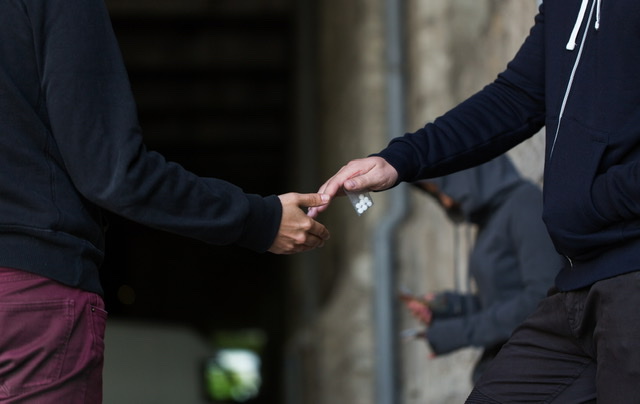
I found many newspapers reporting on the illegal use of the oil along with reports of many people risking prison to get it. I was beginning to understand their situation; it was a moral dilemma for sure.
The Daily Mail reported on the case of Sandra Munford, 53, from Kilmacolm, Renfrewshire. She spends £1,300 a month shipping cannabis oil from overseas to treat her terminally ill daughter Kate, 21, who has been given just three months to live.
When her daughter became unable to walk or talk, Sandra made the drastic decision to break the law for the first time in her life by importing cannabis capsules from Canada where the drug is legal.
Sandra‘s Story; https://www.dailymail.co.uk/health/article-5602263/Mother-53-risks-jail-buying-illegal-cannabis-oil-terminally-ill-daughter.html
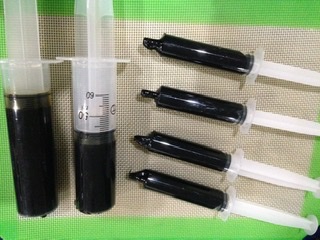
Surprisingly it was Dani that did the research online and was the one to find me a supplier. She found a cancer charity online that supplied the oil. The oil is very expensive at £50.00 a syringe, which is the dose for two days.
Finding a CBD Oil supplier you can trust
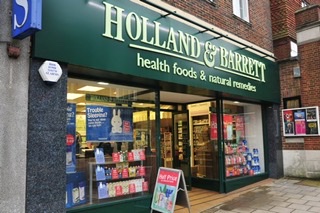
Is it just me? Because it seems like CBD oil (cannabidiol) is popping up everywhere these days. Once available only at novelty or vitamin shops, it’s now in your local grocery store, high street shops, pharmacy, yoga studio, Holland & Barrett and even my local locksmith in the town is getting in on the latest trend.
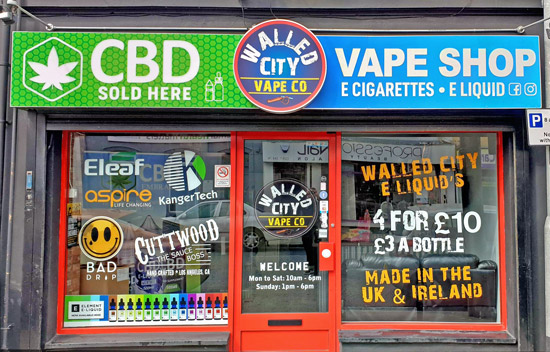
if you go to Google and type in “CBD oil.” You will instantly find thousands of CBD companies, and products ready for purchase. But how does a retailer know which CBD product to stock, and how does a company know which ingredient supplier to purchase raw materials from? Are you really supposed to just take a chance on a CBD company, spend money on a product or ingredient, and cross your fingers that you made the right choice?
You could blindly choose to order from the first CBD company that you find, but you’re bound to encounter some hiccups if you don’t do your research. It can be a challenge to find appropriately priced products/ingredients and to verify the quality, safety, and compliance of the CBD supplier.
CBD comes in many forms: oils that are dropped under the tongue, roll-ons that are applied to the skin and even solutions for vaping Some producers extract CBD oil and add it into foods to create edible products. While there are plenty of CBD oils on the market today, it’s important to find a quality product from a brand you trust.
What to consider when choosing a supplier
While surfing the web with my best friend Google, I came across so many articles that were very helpful in helping choose a CBD oil. Some suppliers, are driven by a desire to build their business and get the most from their efforts, In doing so they are misleading In their marketing and deceptive in their advertising to increase profits. It’s therefore not surprising to see that people are reluctant when it comes to purchasing such products, or that they feel overwhelmed and have no idea how to buy CBD Oil without getting scammed, so who do we trust?
Regardless of your choice, the first and most important thing to do before you buy any product is do your homework and make sure you know what you’re getting
Look For Quality, Not For Low Prices
With so many products only one click away, it’s more than tempting to grab the most affordable CBD Oil you can find online, but cheaper isn’t necessarily better.
If you Google “buy CBD Oil” right now you’ll get more than 2,250,000 results, but you know what’s interesting? Most of these producers and distributors offer no tangible evidence to support the claim that their products are the best.
Beware Of Products That Claim To Cure Everything if you decide to order CBD Oil online, start by learning about the real properties and benefits of cannabinoids.
Hemp seed oil and Hemp CBD Oil are two different products, and neither of them is “medical marijuana”.
The surest way to avoid scams is to beware of those products that claim to be a magic button to cure everything. CBD oil is not a miraculous cure that will make all illnesses go away overnight. It’s the synergistic effect of the oil coupled with diet, exercise and supplements that heals the body.
Finding Biotek
It was while meandering around the stands at the Mind Body & Spirit Show, in November 2019, that I found BIOTEK. I was fortunate in that I wasn’t looking for CBD oil I waiting for my daughter to finish a meditation workshop and I found myself LEANING next to BIOTEK’S stand. I must have looked quite tired, because Tekin, the host of the stand, offered me a seat while I waited.
I met his wife and daughter and as we chatted I quickly began to realise that their was synchronicity in my meeting Tekin and his family. I had been using Holland and Barretts CBD oil to help with pain and nausea, but it wasn’t having the results.
I spoke with Tekin for over an hour, he spoke with enthusiasm and passion as he describes their products he prides itself on having the highest standards for quality, purity and potency. And to ensure you get the best product possible, they use a highly complex CO2 extraction process to extract their CBD and preserve all the cannabinoids and terpenes, while filtering out all impurities. The end result is a potent, full spectrum clean product that’s third-party tested, and backed by a certificate of analysis from AS BELOW.
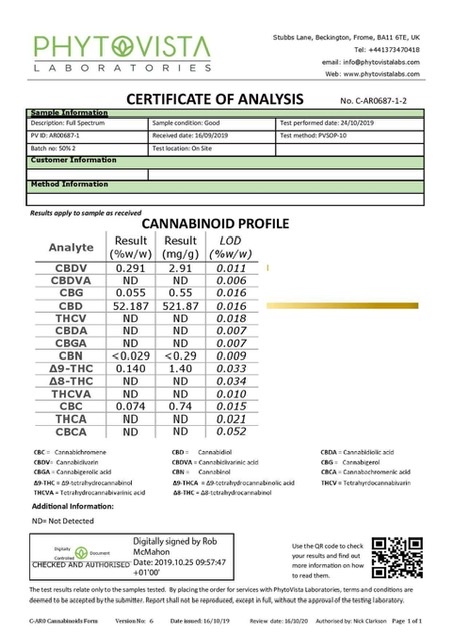
Finally, when your looking for CBD, it’s very important to choose a company that demonstrates complete transparency and commitment to quality assurance. As discussed, it can be very difficult to verify which CBD companies produce high-quality products. Look for companies that share third-party lab tests for their products, and make sure these tests include reporting on potency and possible contaminants like pesticides, heavy metals, mycotoxins, and residual solvents.
Rick Simpson – RSO
If you start to research THC and CBD oil you will definitely hear about a form of cannabis known as Rick Simpson Oil, or ‘RSO’. RSO is a concentrated form of cannabis oil known to have medical benefits, particularly for cancer. But where did RSO come from? And who is Rick Simpson?
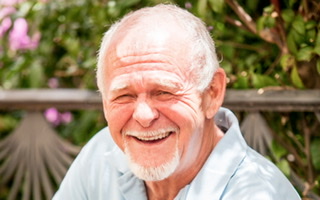
Rick Simpson stumbled upon his cannabis fame purely by accident. Long before “Rick Simpson Oil” was coined as a term, and long before cannabis was considered remotely mainstream, Rick Simpson was an engineer working in a Canadian hospital in 1997.
In 2003, three suspicious bumps appeared on Simpson’s arm. The doctor agreed that the bumps appeared to be cancerous and took a sample for a biopsy. Sure enough, the bumps turned out to be basal cell carcinoma, a form of skin cancer.
Simpson had successfully treated his tinnitus symptoms with cannabis in the past, and he had heard about a study from the Journal of the National Cancer Institute in which THC was found to kill cancer cells in mice. He decided to treat his skin cancer topically, applying concentrated cannabis oil to a bandage and leaving the cancerous spots covered for several days.
After four days, he removed the bandages and the cancerous growths had disappeared. Although his physician refused to acknowledge cannabis as a treatment alternative, Simpson was now a true believer in the medicinal powers of cannabis.
From then on out, he began cultivating his own cannabis and harvesting the plants to create his own specialized form of cannabis concentrate, now known as Rick Simpson Oil, or RSO. It became his mission and goal to distribute cannabis oil to those who needed it, free of charge. He helped treat more than 5,000 patients with RSO, but his journey was not without its setbacks and struggles. Simpson’s own doctor refused to acknowledge the benefits, and he faced arrest and persecution in his native Canada. His home was raided on multiple occasions.
Highs & Lows
At this point, I would like to note a warning when taking this concentrated oil. It is very potent! This is something that a user should start off with small doses. Just one dose a little bit bigger than a grain of rice, had me lying down for a couple of hours, praying to God to bring me back down.
I quickly learned that this new medicine had a dosing schedule which appeared on many websites in various forms but mostly the same information.
TO TREAT CANCER With RSO –
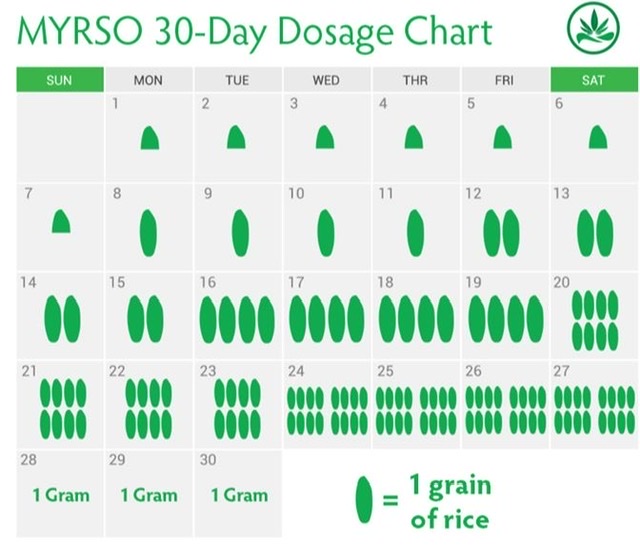
Hippy Chick
I was not without my vices as a teenager, I enjoyed a cigarette or two and I enjoyed alcohol, but I was never tempted, unlike some of my peers, to use drugs of the psychedelic nature. I was born in the 60’s the time of love and peace; I remember seeing the distinct bright fabrics, crazy patterns that created the hippy dress attire of the hippy era and hearing the music. I recall, my only experience of intoxication as a teenager was through alcohol; a bottle of cider at the back of Antrobus Street youth club and in later years at the local Congleton town hall monthly discos. I reflected on this and I realised I hadn’t been tempted to explore psychedelics for fear of losing control of my mind. Here I was in my late Fifties taking THC oil for the first time.
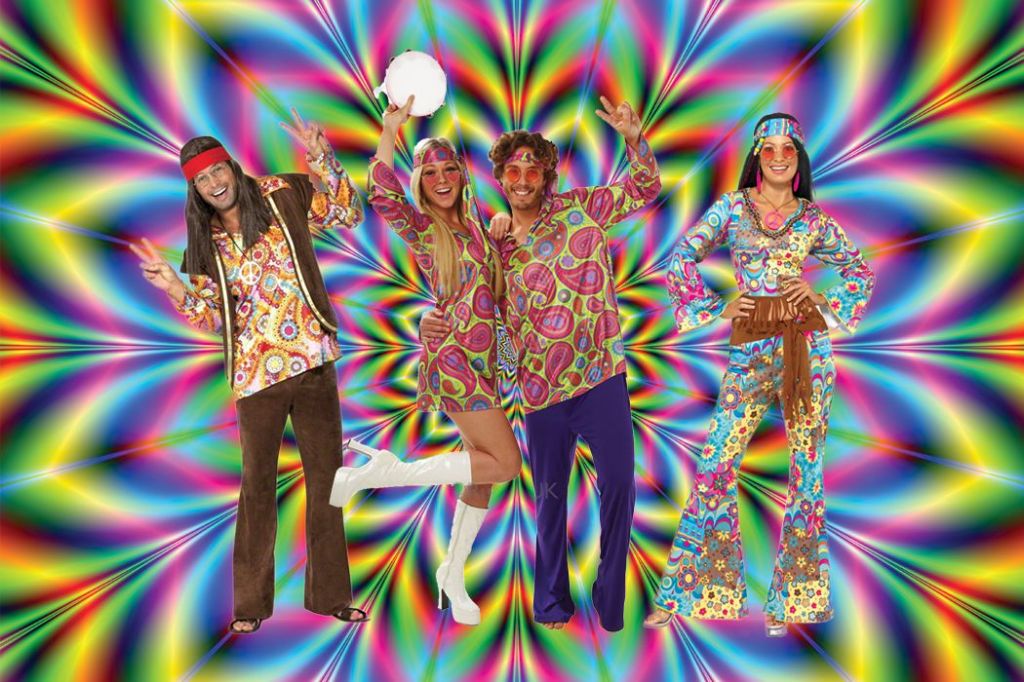
Exploding cancer cells
Apart from the obvious high one gets from taking the oil, I noticed that within 15 mins of taking the oil I began to feel strong stinging sensations in the tumour area. I repeated the dose the following day and I began to feel the same sensations, I wondered if this was attributed to the oil? My curiosity led me once more to Google, where I found online forums dedicated to cancer cures, all talking about their experiences. I found many cases describing stinging and prickling sensations in the tumour area. Over time as I have increased the oil dosage the stinging has increased in the tumour area, I concluded that the oil must be having an effect and I believed the oil was getting into the cells I could feel that stinging.
I focused my mind on the pain and in my imagination, I saw all the rogue cancer cells exploding and disappearing. Healing meditation is very powerful and for those of you not familiar with the benefits of healing meditation, a good person to Google is Joe Dispenzo. https://drjoedispenza.com/pages/about
Mind-Body Connection
The holistic view of healing teaches us that human beings are more than just the physical body and that our emotions, thoughts and spirituality play an essential role in healing; it stresses the mind-body connection. Meditation is the practice of thinking deeply or focusing one’s mind for a period of time, with the goal of evoking feelings of relaxation and inner peace on the body.
Meditation and Cancer
While I’m no stranger to meditation or the power of the subconscious, I am always curious to see the current data on quantum physics and healing. My daily surf of the webs uncovered quite a lot of data on meditation. Some research studies now suggesting that meditation can even change your body on the cellular level. A study published in November 2014 in the journal ‘Cancer’ found that the telomeres — the protein caps at the end of DNA strands that protect chromosomes — of breast cancer patients who practised mindfulness meditation stayed the same length over the three-month study period. In contrast, participants who did not meditate had shorter telomeres over this time.
Healing Plan
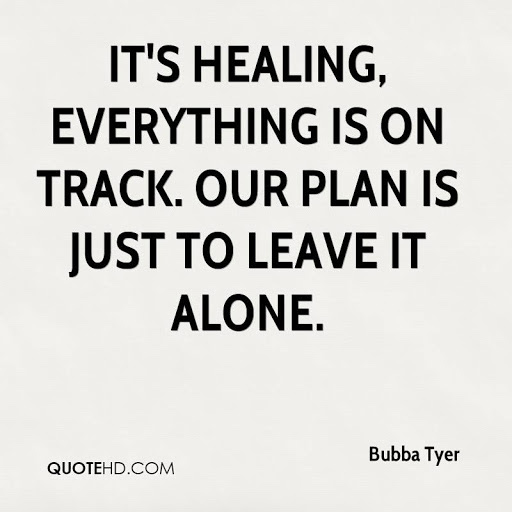
I soon began to realise as I collected the various research data that different cancers were reporting different feeding pathways. Some cancers require different supplements different drugs. and some cancers have a better response rate when in synergy with other drugs and treatments, to that end I needed to make a personal plan.
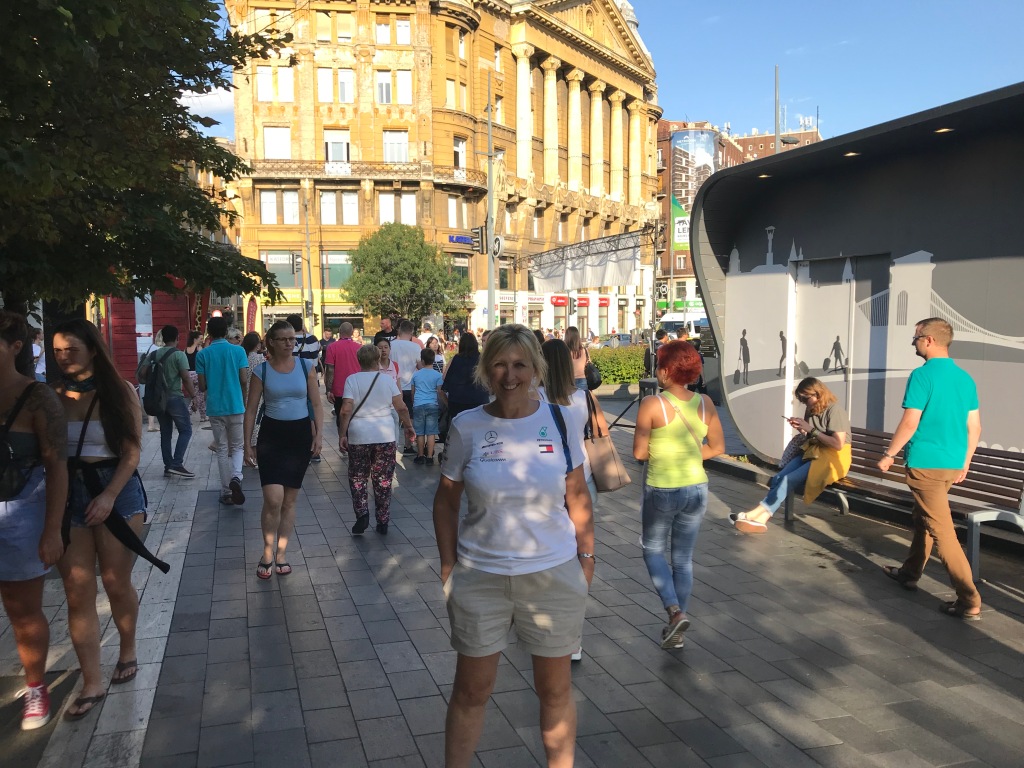
When I was first diagnosed with cancer, my mind was reeling from the news and yet its in those moments that often your doctor wants you to sort through cancer treatment options and help decide on a plan. I felt overwhelmed by all the information I have been given, confused around the reality of my situation and not truly aware of the long term consequences to my choices. Yet it was in these moments that In 2015 I decided on a course of treatment that would be life changing. The Mayo clinic suggests 5 steps to help make decisions to form a treatment plan.
https://www.mayoclinic.org/diseases-conditions/cancer/in-depth/cancer-treatment/art-20047350
Step 1: Set your ground rules
- Decide how much you want to know. While most people want to know exactly what their treatment is and their survival chances, others don’t. If you don’t want to know all the details, let your doctor know.
- Decide how you want to make your treatment decisions.You might want to take the lead in the decision-making process. Or you might want to turn all decisions over to your doctor.
- Have realistic expectations. Your doctor can give you estimates about what you can expect to get from each type of treatment. Exactly what side effects you may be willing to put up with will depend on what the benefits of the treatment are likely to be. Communicate your preferences with your doctor.
- Keep the focus on you. Don’t let yourself be pressured into a particular treatment option. Pick what you feel most comfortable with.
- Accept help. You’ll need support throughout your treatment. Support can come from your doctor, your friends and your family.If you don’t feel supported in your decision-making, contact groups such as the American Cancer Society, which can put you in touch with cancer survivors who may be able to help you through this process.
It might help to write down your expectations and preferences before you meet with your doctor. That might help you better express your hopes for and feelings about your cancer treatment.
Step 2: Decide on a goal
Deciding what you want out of treatment can help you narrow your treatment choices. Are you hoping for a cure, stabilization or solely symptom relief?
Depending on your cancer type and stage, your goals for treatment might be:
- Cure. When you’re first diagnosed, it’s likely you’ll be interested in treatments that cure cancer. When a cure is possible, you may be willing to endure more short-term side effects in return for the chance at a cure.
- Control. If your cancer is at a later stage or if previous treatments have been unsuccessful, you might adjust your goal to controlling your cancer. Different treatments may attempt to temporarily shrink or stop your cancer from growing. If this is your goal, you might not be willing to endure the side effects of harsher treatments.
- Comfort. If you have an advanced stage of cancer or one that hasn’t responded to treatments, you might decide that comfort is most important to you. You and your doctor will work together to make sure you are free of pain and other symptoms.
Step 3: Research your treatment options
To make a reasonable treatment decision, keep in mind the type of cancer you have, its stage, and what treatment options are available and how likely these treatments are to work under these circumstances. Talk to your doctor about trustworthy websites, books and patient education materials to supplement your discussions.
Cancer treatments are sometimes used in conjunction with each other. For example, it’s common to pair surgery or radiation with chemotherapy. Doctors sometimes refer to a treatment that’s used after the primary treatment as an adjuvant therapy.
Step 4: Analyze the benefits versus the risks
Compare the benefits and risks of the different cancer treatments to decide which treatments fall within your goals. Rate the treatments you’re considering based on the pros and cons of each.
Some aspects you’ll want to consider for each treatment include:
- Side effects. Take time to review the side effects of each treatment and decide whether they’ll be worth enduring or too much to handle. Your doctor can give you a good idea of how common the various side effects are for each treatment and explain options for managing side effects to make treatment more tolerable.
- How treatment affects your life. Consider how treatment will affect your everyday life. Will you need a day off work or several weeks off? How will your role in your family change? Will you need to travel for your treatment?
Your personal values and goals will make a difference in what treatments are best for you. Only you can decide what type of treatment will fit best in your life. But you don’t have to make a choice and stick with it. It’s very possible that you may change your mind during treatment, and that’s fine.
Step 5: Communicate with your doctor
Effective communication with your doctor is the best way to make sure you’re getting the information you need to make an informed decision. To make communicating with your doctor easier, try to:
- Speak up when you don’t understand. If you need further explanation or clarification, tell your doctor. If you don’t speak up, your doctor may think you understand.
- Write your questions in advance. Appointments can be stressful and emotional. Don’t expect to remember all the questions you want to ask.
- Record your conversations. Try to keep track of what your doctor tells you by taking notes. You might also ask if it’s OK to record the conversation. This record will be a good reference if you have questions later.
- Bring someone with you. If you feel comfortable sharing your medical information with a friend or family member, bring along someone to take notes. Then you’ll have another person you can talk through your treatment decisions with.
- Keep copies of your medical records. Ask for copies of your medical records and bring them to each appointment.
Don’t expect you and your doctor to fully understand each other after one meeting — it may take a few conversations before you both feel as if you’re on the same page.
Other things to keep in mind
As you’re making your treatment decisions with your doctor, keep these points in mind:
- Take your time. Although a cancer diagnosis might make you feel as if you have to make immediate decisions to begin therapy, in most situations you have time to make choices. Ask your doctor how much time you have to decide.
- You can always change your mind. Making a treatment decision now doesn’t bind you to that option. Tell your doctor if you’re having second thoughts. Significant side effects may make you want to change your treatment plan.
- You can seek a second opinion. Don’t be afraid of offending your doctor if you want to get a second opinion. Most doctors understand the need for a second opinion when facing a major decision.
- You don’t have to be involved with treatment decisions. If you prefer, tell your doctor you’d rather not be involved in the decision-making process. You can always get involved later when you feel more comfortable with the situation. Let your doctor know who you want to make decisions about your care.
- You don’t have to have treatment. Some people choose not to have treatment at all. People with very advanced cancers sometimes find they’d rather treat the pain and other side effects of their cancer so that they can make the best of the time they have remaining.If you choose not to be treated, you can always change your mind. Forgoing treatment doesn’t mean you’ll be left on your own — many ways of controlling side effects exist.
Build your Team of Experts.
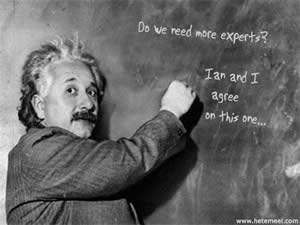
Ok information overload …… its time to call in the experts
In October 2019 I contacted Chris Woollams from the complementary CANCER ACTIVE Charity. Chris researches and writes extensively on Cancer, Gut Health, diet and maintaining health and healing. Chris continues to research and travel the world talking to medical experts, scientists and functional doctor’s, making him one of the leading researchers and experts in this field.
Chris and his daughter Katherine began the charity when Katherine developed brain cancer In 2002. Woollams who is a former Oxford University Biochemist, made his campaign to cure Katherine his main focus, he became very active and extremely passionate in his research and campaigning to find treatments. His site is a treasure trove of valuable information, that is right now, helping to save thousands of lives.
Woollams built his team of experts so that he could build a library of knowledge with an aim to help cure his daughter while sharing and helping others.
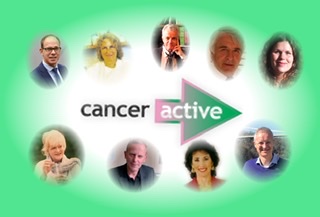
The site and charity has become the most trusted and most comprehensive source of information on holistic, integrated, or integrative cancer therapies, and on cancer prevention in the UK. They have no sponsors that influence the information they provide to people. No vested interests. No conflict of interest. They seek only to be truthful and so help people beat cancer.
The CANCERactive Medical Board is comprised of Professors of Oncology and Medical Doctors who specialise in Oncology, under the Chairmanship of Dr. Chris Heath; and the aim is to bring readers scientifically accurate, evidence-based, trustworthy information on the subjects of oncology and health.
https://www.canceractive.com/article/canceractive-medical%20board
Building a Personal cancer-fighting programme tailored to you and your cancer
So now that I had found my experts, my aim in contacting Chris was to have a personal consultation resulting in a personal prescription. During our chat, we looked at my medical history, previous treatment history, diet, exercise, stress levels , even holiday destinations were explored. The following day Chris emailed over a written report, an account of our discussion, he gave me a Detailed personal prescription (PP).
The PP was aimed specifically at treating triple negative breast cancer, (TNBC). Chris pointed me in the right direction, to the key places to start as it can all be so confusing. It doesn’t matter if your newly diagnosed, or the cancer has recurred, most of us just need some sort of treatment breakthrough, or simple guidance through the minefield of confusion found on the Internet!
Chris helps people from all over the world build their own personal cancer treatment programmes.During the consultation, that lasted over two hours, Chris explained that people build a body conducive to cancer taking between 6-10 years. He said if you want to give yourself the best personal odds of survival, you will need to build a body conducive to health. Chris Likened it to having a bucket with holes in it. First step for anyone with a cancer – PLUG THE HOLES. Too many people rush off to find a Mexican or German Clinic for some ’alternative treatment’ like immunotherapy, hyperthermia, ozone therapy, or IPT at great expense, when they have not fixed the core fundamental issues and plugged the holes!”, says Chris.
Plugging the holes

1. Sort out your blood oxygen:
Cancers thrive if your oxygen levels are low. Chris recommended that; The start point without any doubt is that i would need to do ’Light to Moderate exercise’ every day for about 30-45 minutes. What does that mean? I need to get out of breath. In need to get puffed. So a meander through the woods with the family doesn’t cut it, nor does 30 minutes gardening. A brisk ’speed walk’ would be good, cycling or swimming, something to get the heart pumping.
Apparently blood oxygen levels should be 98, 99 or 100 (out of 100). Chris suggested i get blood tests to monitor my levels. If I have lowered levels or I have a poor record with exercise, then he suggested I find the nearest Hyperbaric Oxygen centre to where I live, which is Coventry for me. I contacted the Multiple Sclerosis Society who use them and I booked 3 x sessions weekly. I will write more about my experience with Hyperbaric therapy later.
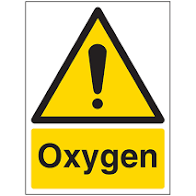
2. Fix your vitamin D levels:
Research shows that low plasma levels of vitamin D result in more chronic illness, especially cancer. And if your levels stay low when you have cancer, your survival will be reduced for sure. (82% of women with breast cancer have levels of 20 ng/ml on diagnosis and the NHS says the correct level should be 35-40 ng/ml). Boston Medical School are the experts and they believe levels should be above 75 ng/ml. They advise everybody with cancer to take 5,000IUs a day. It’s the equivalent of 4 hours on the beach.
So at this point, you may be thinking, sunshine is a luxury in the UK, 4 hours on a beech without rain is a luxu unlike Spain We don’t exactly get a steady supply. We are so fortunate to have ample supplies of rainwater that keeps our beautiful countryside green and lush, with rolling hills, woods and farmlands to be enjoyed. is cloud cover, rain and little sunshine. luxury, we have plenty of cloud and rain
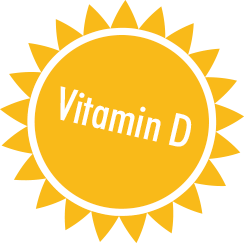
3. Clean your liver:
Cancer patients regularly suffer from fatty livers as the organ struggle to cope with removing the toxins the cancer cells produce. The fat build up can make gallstones common and worsen possible bile duct blockages. This causes fat levels to increase further in the liver and, in turn, in the lymph and blood, resulting in depressed immune response and, research has shown, more metastases and shorter survival times.
The last thing I wanted is that my liver – the largest organ in my body – becomes inefficient in the thousands of daily jobs it needs to perform.
4. Heal your gut:
Without a healthy gut your immune system is compromised !!
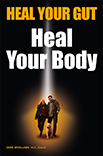
How Your Gut Health Affects Your Whole Body
Click on the Following link to watch a slide show on the imprtance of gut health.;
https://www.webmd.com/digestive-disorders/ss/slideshow-how-gut-health-affects-whole-body
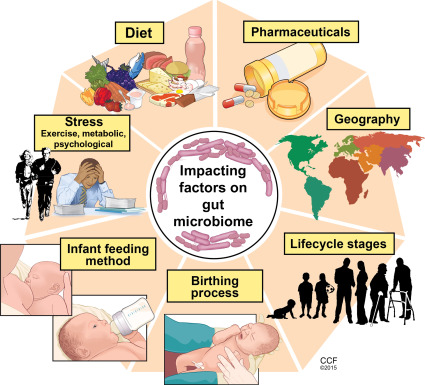
Chris said that, ‘It is frightening how many patients have had prolonged spells on antibiotics in their life. Antibiotics destroy healthy bacteria that is needed to keep the gut healthy. Then people go abroad to somewhere exotic and have a bad stomach for a few days. They are not aware they have picked up a parasite or a pathogen from poorly prepared food and or they forget about it (and assume the pathogen or parasite has gone). Your gut gets ill first and then you do.
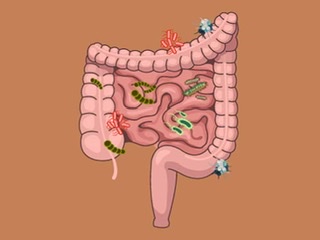
This is a major part of a healthy body and healthy mind. You must fix your gut microbiome – it controls 85 per cent of your immune system and immune memory, it defends you against yeasts and pathogens, it makes B vitamins, vitamin K, melatonin, glutathione, short chain esters that stop bad fats building up in your body, and others that control chronic inflammation.
5. Combat Chronic Inflammation:
Lack of good gut bacteria, the presence of bad bacteria, the presence of environmental chemicals, too much stress, steroids and even big meals, can each and all cause chronic inflammation in the body. And cancer loves chronic inflammation – it is how it spreads. You have to calm your body. UCLA are the experts. Over the last 15 years they have been consistent. People who actively manage their stress, survive longer. And they talk of counselling, eating a colourful Mediterranean diet, taking fish oils, and practising yoga and meditation.
. Chris suggested that; Stress Management is the most ignored element in cancer therapy.’ He advised me to start with changing my diet to a colourful Rainbow Diet Diet.
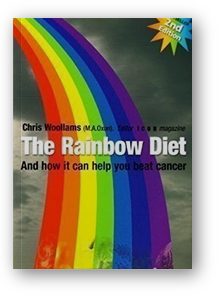
Turning into a Vegan

